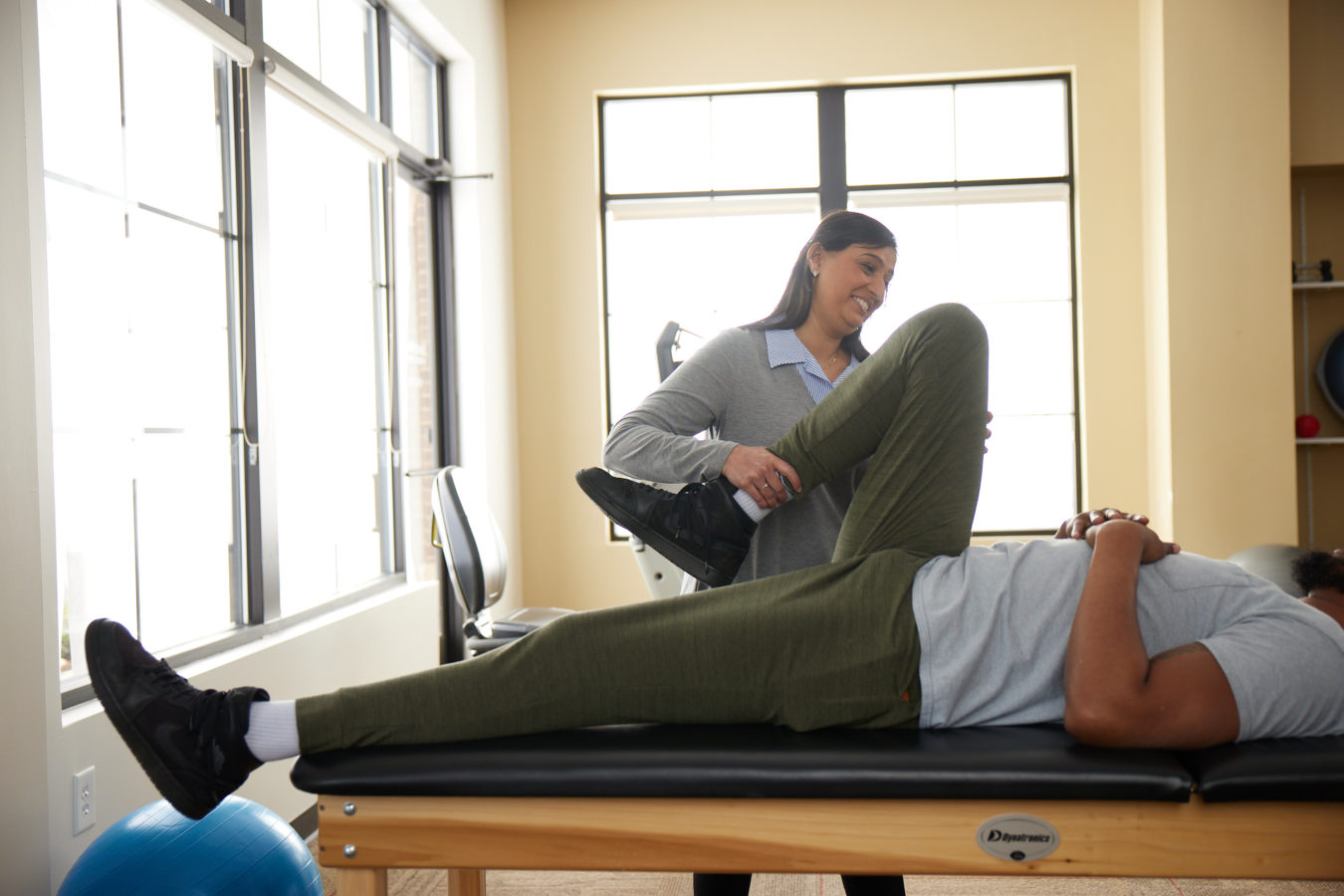
One of the most common locations for knee pain is near the kneecap (patella) and is known as patellofemoral pain syndrome. It’s also sometimes called “runner’s knee” and often occurs in women and young adults.
As the name suggests, the main symptom of patellofemoral pain syndrome is knee pain, especially when sitting with bent knees, squatting, jumping, going up or downstairs, or when the knee is bent during any weight-bearing activity.
Physical therapy strengthens the hip flexor, trunk, and knee muscle groups. Physical therapy can help reduce pain, increase mobility, and get you back to doing the activities, recreation, and sports you love.


There is a wide range of treatments that can be used for patellofemoral pain syndrome, including:
*Services are not available at every location. Visit our Locations page for more details.